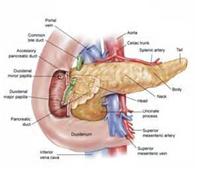Often referred to by doctors as diabetes mellitus, diabetes is a group of metabolic diseases in which the person has high blood glucose . It is a disorder of the metabolism where the body loses the ability to process glucose in the bloodstream because of inadequate insulin, a hormone produced in the pancreas. In absence of proper processing of sugar, the body becomes either hyper-glycemic (too much sugar) or hypoglycemic (too little sugar). Both the situations are dangerous and make the body react in number of ways such as weakened kidneys, impaired nervous system, loss of sight and in some extreme cases, coma. Recent estimates project that nearly 180 million people are afflicted and the figure is likely to reach 300 millions. Over a 15 years period the number of cases worldwide has more than trebled. Some health experts and officials have deemed this problem as a global epidemic.
Three Types of DIABETES
Type I or insulin-dependent diabetes mellitus (IDDM): The body does not produce insulin. It is also called juvenile diabetes or early-onset diabetes because people usually develop this type of diabetes before their 40th year, often in early adulthood or teenage years. Approximately 10% of all diabetes cases are type 1. Patients of this type need to take insulin injections for the rest of their life. They must also ensure proper blood-glucose levels by carrying out regular blood tests and following a special diet.
Symptoms of TYPE II or Non-insulin-dependent diabetes mellitus (NIDDM): There may not be problem with the production of insulin per se. Insulin may be in enough quantity but the cells become resistant to insulin (insulin resistance) and all the glucose keep circulating within the blood. NIDDM makes up the majority of diabetes cases; approximately 90% of all cases of diabetes worldwide are of this type. Symptoms may become more intense or frequent with age. Some people may be able to control their type 2 diabetes symptoms by losing weight, following a healthy diet, doing plenty of exercise, and monitoring their blood glucose levels. Nonetheless, type 2 diabetes is typically a progressive disease; it gradually gets worse and the patient will probably end up have to take insulin, usually in tablet form.
Gestational Diabetes: This type affects females during pregnancy. Some women have very high levels of glucose in their blood, and their bodies are unable to produce enough insulin to transport all of the glucose into their cells, resulting in progressively rising levels of glucose. Majority of gestational diabetes patients can control their diabetes with exercise and diet. Between 10% to 20% of them will need to take some kind of blood-glucose-controlling medications. Undiagnosed or uncontrolled gestational diabetes can raise the risk of complications during childbirth. The baby may be bigger than he/she should be.
